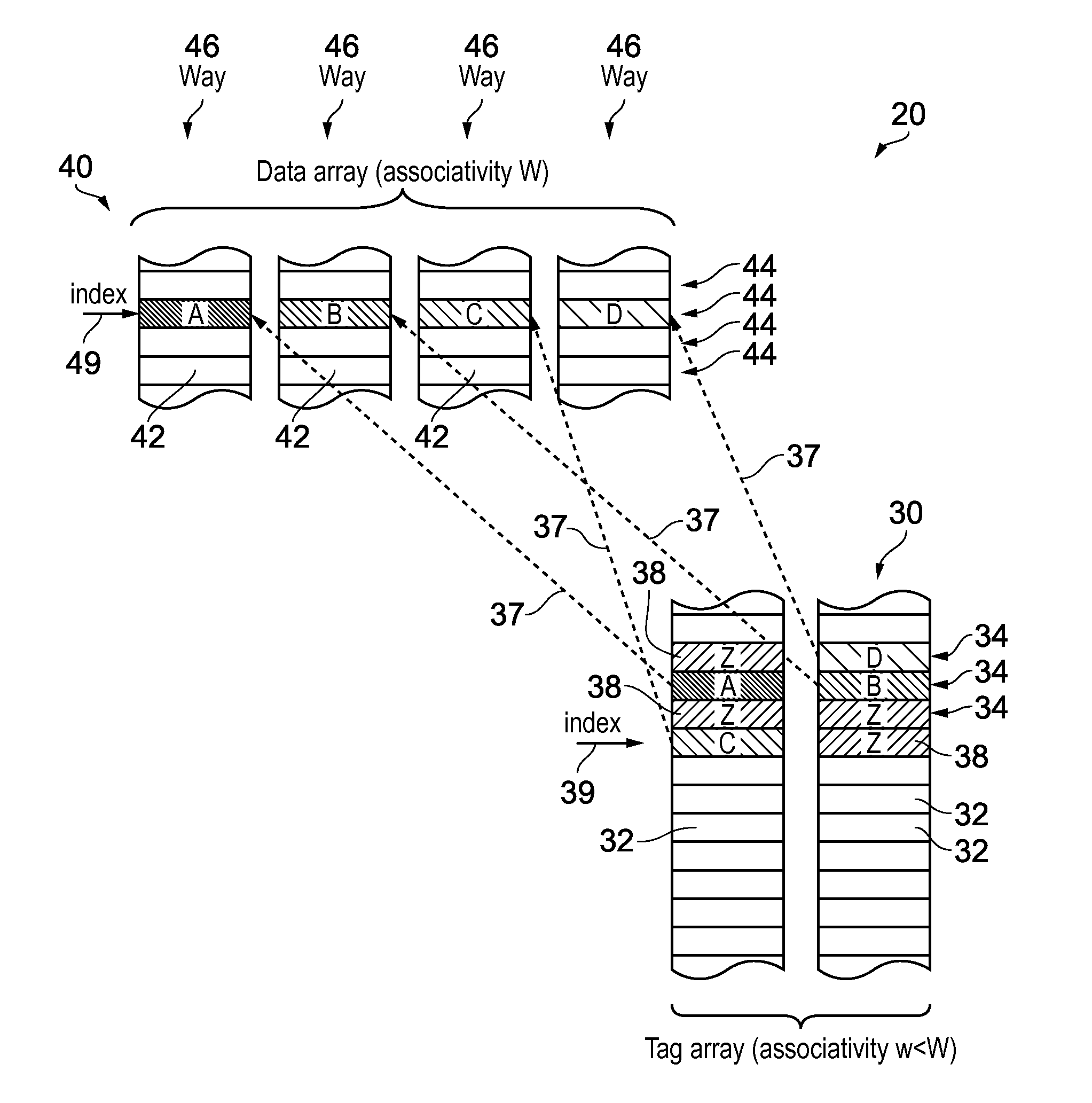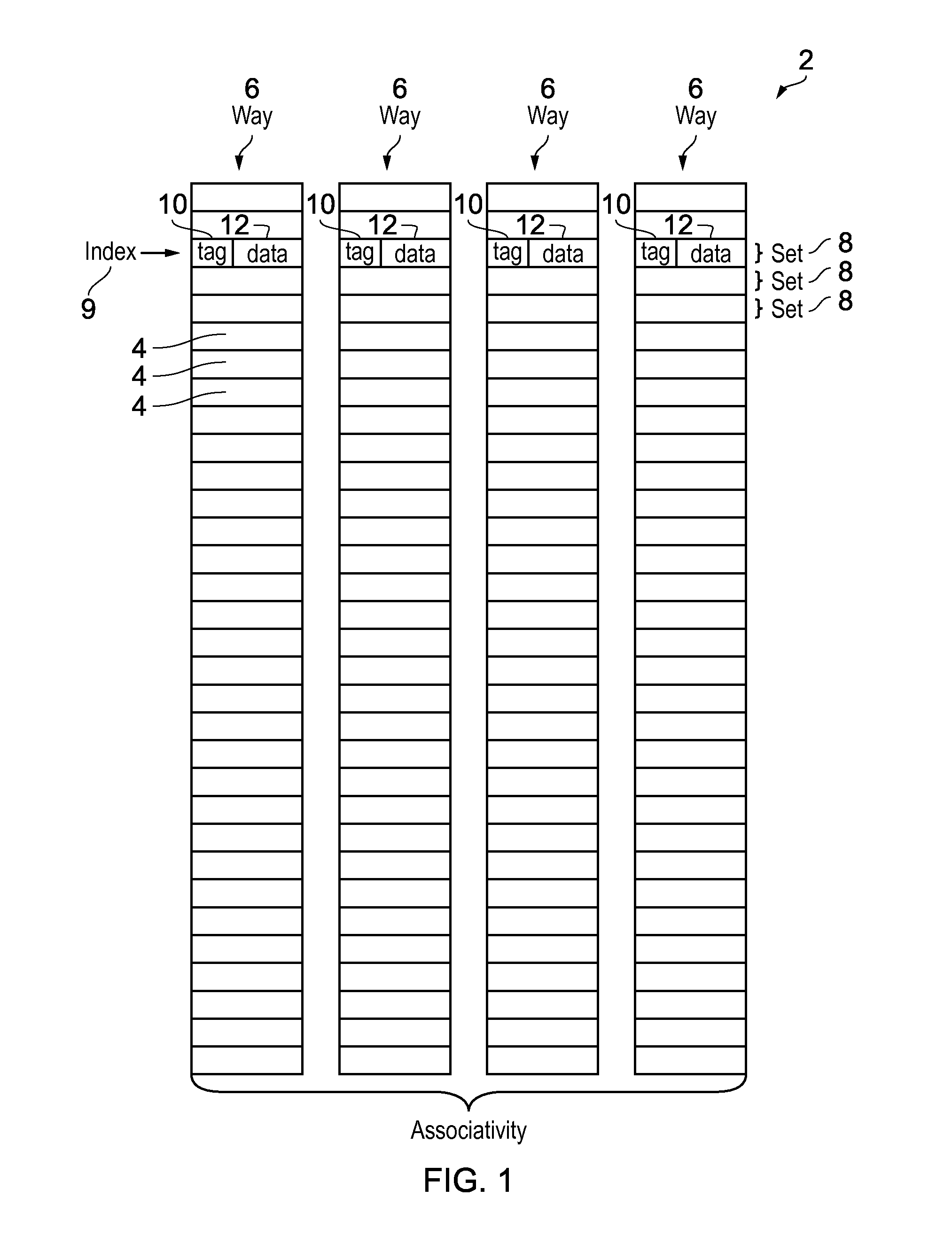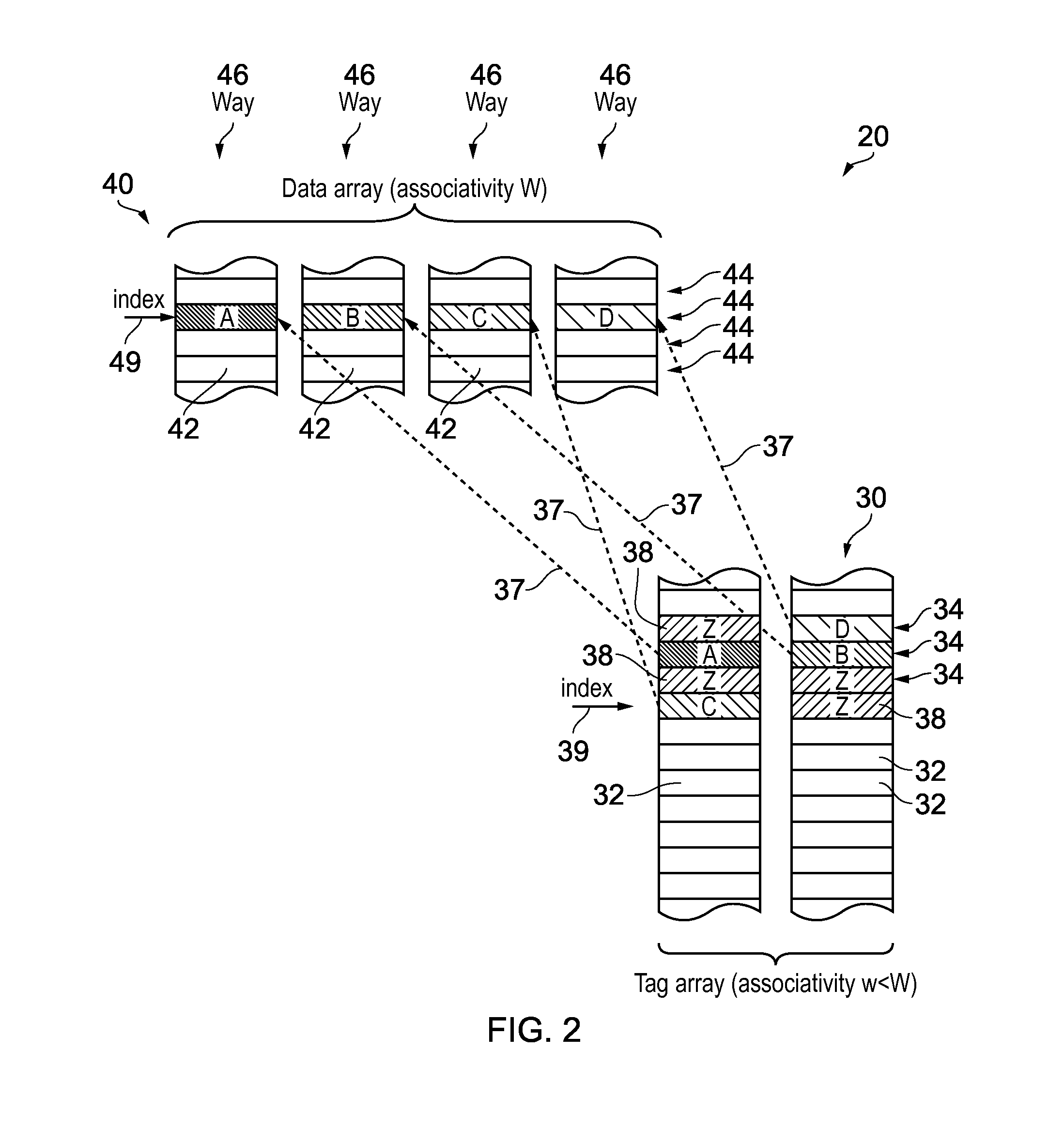Data store and method of allocating data to the data store
a data store and data technology, applied in the field of data processing, can solve the problem of energy consumption of searching through the set of tag locations, and achieve the effect of reducing the overall power consumption of the data store and saving a significant amount of storage capacity
- Summary
- Abstract
- Description
- Claims
- Application Information
AI Technical Summary
Benefits of technology
Problems solved by technology
Method used
Image
Examples
Embodiment Construction
[0051]FIG. 1 shows an example of the logical arrangement of a conventional data array 2 comprising a number of entries 4 for storing data values. The entries 4 are arranged logically into ways 6 and sets 8, each set 8 including an entry 4 from each of the ways 6. The number of ways 6 (or the number of entries 4 in each set 8) is referred to as the “associativity” of the data array. It will be appreciated that FIG. 1 merely shows the logical arrangement of the entries 4, and the physical arrangement of the entries 4 may be different. For example, “neighbouring” entries of the same set 8 or the same way 4 may in practice be arranged at separate physical locations in a memory device.
[0052]Each data value to be stored to the data array 2 has a corresponding address which is formed of an index portion 9 and a tag portion 10. The data value can be stored in any of the entries 4 of a corresponding set 8 determined based on the index portion 9 of the address of the data value, and cannot be...
PUM
 Login to View More
Login to View More Abstract
Description
Claims
Application Information
 Login to View More
Login to View More - R&D
- Intellectual Property
- Life Sciences
- Materials
- Tech Scout
- Unparalleled Data Quality
- Higher Quality Content
- 60% Fewer Hallucinations
Browse by: Latest US Patents, China's latest patents, Technical Efficacy Thesaurus, Application Domain, Technology Topic, Popular Technical Reports.
© 2025 PatSnap. All rights reserved.Legal|Privacy policy|Modern Slavery Act Transparency Statement|Sitemap|About US| Contact US: help@patsnap.com



